Contents
Guide
SUPER
FAST
INSTANT POT
PRESSURE COOKER
COOKBOOK
100 EASY RECIPES
FOR EVERY
MULTI-COOKER
HEATHER RODINO
& ELLA SANDERS

The author and publisher have provided this e-book to you for your personal use only. You may not make this e-book publicly available in any way. Copyright infringement is against the law. If you believe the copy of this e-book you are reading infringes on the authors copyright, please notify the publisher at: http://us.macmillanusa.com/piracy.

Electric pressure-cooking has taken the nation by storm. And why not? Compared to the stovetop or the oven, an electric pressure cooker is less messy, generates less heat (a boon in summer), uses less electricity, and retains more vitamins in the food. Dishes that would normally take hours to cooktough cuts of meat, dried beanstake minutes. And its easier than a traditional stovetop pressure cooker because you dont have to adjust the heat levels. If youre a busy family, a working couple, a budget- or health-conscious cook, and even regardless of whether or not you like to cook, an electric pressure cooker has something to offer you.
The goal of Super Fast Instant Pot Pressure Cooker Cookbook is to give you 100 electric pressure-cooker recipes you can get on the table in sixty minutes or lessoften much lessfrom start to finish, including prep time. (Okay, there are one or two exceptions. Did someone mention cheesecake?) And most of that hour will be free time when the machine is working hard to make you a delicious meal. While there are thousands of nonpressure cooker recipes you can make in under 30 minutes, the idea here is to make accessible dishes that might take a littleor a lotlonger if you made them conventionally. Most of the electric pressure cookers, also known as multi-cookers, on the market can do many things: make yogurt and rice, slow-cook, and steam. The only thing they cant seem to do is wash themselves or take out the trash! This book focuses exclusively on the Manual pressure-cooking function, though well also use Saut to brown foods. If your pot does not have a saut or similar setting, you can perform the same function with a pan on the stovetop.
If youre new to pressure cooking, you may have been drawn in by enticing claims of having dinner on the table in two minutes or ten minutes. Well, yes and no. A pressure cooker takes some time to come up to pressure before the cooking time starts. This process usually takes about ten minutes or somuch longer if youre cooking something from frozen (and yes, you can do that too, unlike with a slow-cooker). Only then does the cooking time begin, and the machine counts down from there. After the cooking time is over, the pot is still pressurized. (Dont even think about trying to open the lid at this point.) The pressure releases in one of two ways, either naturally, meaning you just wait until the float valve drops and its safe to open the lid (a process that takes between ten and twenty minutes), or you manually release the pressure by turning the steam release knob. Many recipes in this book use a partial natural release of five, ten, or fifteen minutes, followed by a manual release to release any remaining pressure. During a manual release, the machine will start shooting hot steam from the knob, so youll want to protect your hands with an oven or silicone mitt before you turn the knob. (Check out the owners manual of your particular multi-cooker for guidance on how this function works on your pot.) So essentially, pressure-building time + cook time + pressure-releasing time = total cook time. This means the stovetop or oven is still a better bet for foods that are delicate or cook quickly (such as seafood or pasta), but there are a few exceptions to this rule. In the case of steel-cut oats, for example, the total cook time is about the same as the stovetop, but its just so much easier to make them in the pressure cooker because you dont have to monitor or stir them.
Thus, while the multi-cooker is not exactly instant, it is pretty darn fast, making a dish that might have taken two hours to cook on the stovetop doable in twenty to thirty minutes of pressure time (forty to fifty minutes from start to finish). For many people, however, the real beauty of electric pressure-cooking may be that you dont have to do anything to it while its cooking. That may sound obvious, but even with a pot of something long-simmering on the stove, you still have to stir occasionally. For food thats roasting in the oven, you have to check on it, make sure its not burning, baste it, turn it, and so on. Initially, it might feel a little strange to set it and forget itand especially if youre an avid cook, it is indeed a bit of a leap of faith to use an electric pressure cooker, because you cant see inside to know how your food is progressing. You start it and its all a mystery until it beeps, the pressure releases, and you lift the lid. Sort of scaryand yet entirely liberating. In the meantime, you can make a salad, get a pot of rice or pasta going, help the kids with homework, start a load of laundry, catch up on email, or simply relax. (Just dont stray too far away!) If youre preparing multiple courses, the pressure cooker allows you to nearly forget about one them. If youre making a complicated main course on the stovetop, get an easy side dish going in the pot. Before you know it, youll wonder how you ever managed without your multi-cooker.
A Few Tips
In this book, for the purposes of calculating the Total Time a recipe will take, ten minutes have been built in as the time it takes the pot to reach pressure. Your individual pot may take more or less time than this.
 Many pots switch to a Keep Warm function after the cook time is over. To avoid overcooking, press Cancel or unplug the pot. If you are doing a partial natural releasewhere you let the pot release pressure naturally for a number of minutes before manually releasing any remaining pressureyoull need a timer to keep track of how much time has elapsed.
Many pots switch to a Keep Warm function after the cook time is over. To avoid overcooking, press Cancel or unplug the pot. If you are doing a partial natural releasewhere you let the pot release pressure naturally for a number of minutes before manually releasing any remaining pressureyoull need a timer to keep track of how much time has elapsed.
 Dont overfill the pot. For foods that expand during cooking, like beans, dont fill it more than half full. For other foods, dont fill it more than two-thirds full.
Dont overfill the pot. For foods that expand during cooking, like beans, dont fill it more than half full. For other foods, dont fill it more than two-thirds full.
 When you open the lid, open it away from yourself and others. Similarly, when you release the pressure, keep your hands and face away from the hot steam.
When you open the lid, open it away from yourself and others. Similarly, when you release the pressure, keep your hands and face away from the hot steam.
 This introduction is not a substitute for reading and understanding the owners manual of your pot. Read it and refer back to it from time to time because we all forget stuff! There are lots of brands and models of electric pressure cookers on the market now and more arriving all the time, and each one takes some getting used to. Get to know the different parts, how to keep them clean, and how to use your pot safely. You may find that your pot cooks a little slower or faster than what the recipe indicates. Adapt the cooking time accordingly. Be patient, and youll find the small initial learning curve was worth it for how much ease the pot brings to your life.
This introduction is not a substitute for reading and understanding the owners manual of your pot. Read it and refer back to it from time to time because we all forget stuff! There are lots of brands and models of electric pressure cookers on the market now and more arriving all the time, and each one takes some getting used to. Get to know the different parts, how to keep them clean, and how to use your pot safely. You may find that your pot cooks a little slower or faster than what the recipe indicates. Adapt the cooking time accordingly. Be patient, and youll find the small initial learning curve was worth it for how much ease the pot brings to your life.

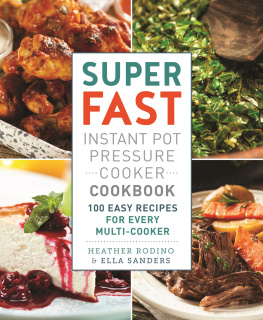
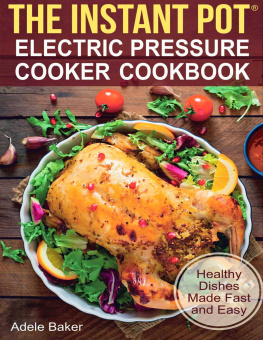

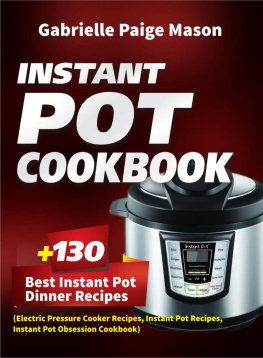


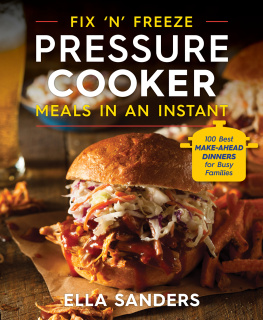
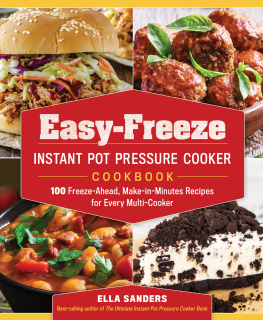
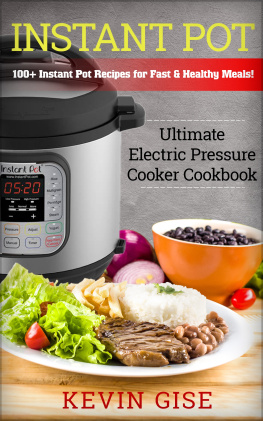
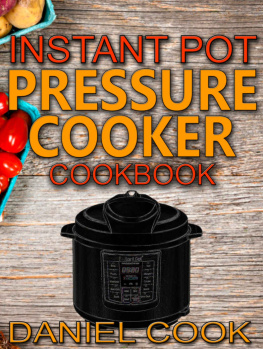




 Many pots switch to a Keep Warm function after the cook time is over. To avoid overcooking, press Cancel or unplug the pot. If you are doing a partial natural releasewhere you let the pot release pressure naturally for a number of minutes before manually releasing any remaining pressureyoull need a timer to keep track of how much time has elapsed.
Many pots switch to a Keep Warm function after the cook time is over. To avoid overcooking, press Cancel or unplug the pot. If you are doing a partial natural releasewhere you let the pot release pressure naturally for a number of minutes before manually releasing any remaining pressureyoull need a timer to keep track of how much time has elapsed.